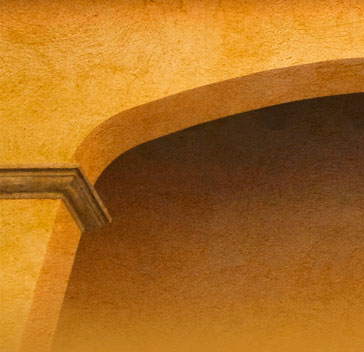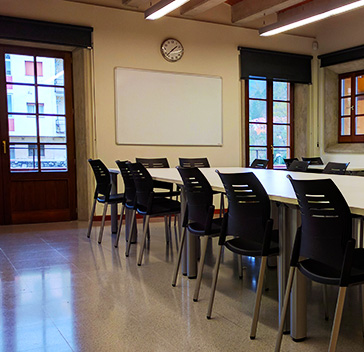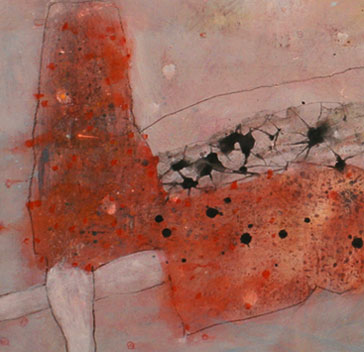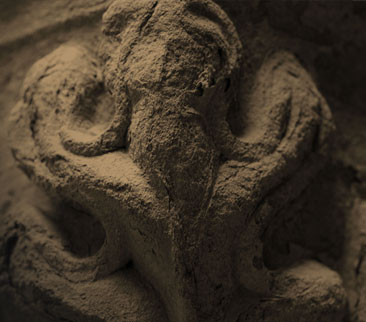Ball of the Pabordes
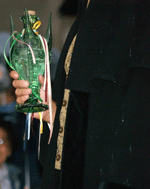
It is, without a doubt, the most outstanding event of the Festa Major. It is danced only on the Sunday and Monday of Festa Major in the Plaza Mayor or on very special occasions. It is rarely danced outside the town.
Of a stately and very elegant character, 4 couples dance the four parts that make up the dance. The origin of the Papordes Dance is uncertain. It was probably born linked to religious worship, since in the past it was common to dance inside churches as an offering to the deity.
When it was forbidden to dance inside the churches, the Ball of the Pabordes went out into the street and suffered a process of degradation that led to its restoration in 1945 and its stately character was restored.
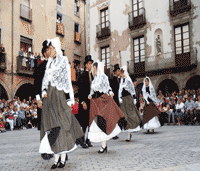 In 2011, as part of the Festa Major, the Sant Joan de les Abadesses Town Council received the diploma that accredits the Ball of the Pabordes de Sant Joan de les Abadesses as a Festive Patrimonial Element of National Interest, making the is included in the catalog of the Festive Heritage of Catalonia.
In 2011, as part of the Festa Major, the Sant Joan de les Abadesses Town Council received the diploma that accredits the Ball of the Pabordes de Sant Joan de les Abadesses as a Festive Patrimonial Element of National Interest, making the is included in the catalog of the Festive Heritage of Catalonia.
The award was presented to Mr. Lluís Puig i Gordi, director of the Center for the Promotion of Popular and Traditional Catalan Culture, together with Mr. Antoni Baulida i Casadellà, director of Territorial Cultural Services in Girona.
Legend and myth of Count Arnau
He is a true example of a feudal lord who mistreated his vassals, defrauded the soldier from the cops and seduced the maidens. It is said that the stairs carved into the rock that go up to the sanctuary of Montgrony, in Gombrèn, were built by the Count and then he did not pay the wages he had promised to the day laborers. A more recent version of the legend tells that Count Arnau, through a very deep mine that crossed the mountains, came to see the abbess of the monastery of Sant Joan, whom he kidnapped one night. When he died, he was condemned to run eternally and without rest on his horse of flames and followed by a pack of dogs through the mountains of the Serra Cavallera. On stormy nights, surrounded by the barking of dogs, it scares the farmers and the people who are in the mountains.
The legend was born from the song, which must have been composed around the 17th or 18th centuries. The song acted as an agglutinator of a whole previous legendary substrate. It wasn't until the middle of the 19th century when the first men of the Renaissance discovered the song and the legend that, with their literary recreations, gave it a new life and turned the legend into a myth: the Myth of Count Arnau.
 The Witches and the weevil of Malatosca
The Witches and the weevil of Malatosca
Near Molí de Malatosca, in Sant Joan de les Abadesses there is a gorge called de les Bruixes, because they had stayed there. One day they called a midwife from the village because one of them was due to have a child. In payment for her services, they gave her a skirt of lentils, and the midwife, in a rage, threw them down Ter. The next day, when he put on his apron, he noticed that a lentil had become embedded in it and had turned to gold.
Relevant characters
- Eusebi Bertrand Serra (1877-1945) Adopted son (1909). Industrial of the textile and political sector. He was one of the founders of the Regionalist League party and was elected deputy in Corts for the district of Puigcerdà between 1907 and 1923. During these years, he played a decisive role in the arrangements for the construction of the new bridge. He also promoted the construction of the Toses pass road and the railway line between Ripoll and Tor de Querol.
- Jaume Espona Brunet (1888-1958) Adopted son (1955) and gold medal of the Village posthumously (1972). Industrial and patrons. From 1921 he directed the spinning factory that his father had installed in Molí Gros at the end of the 19th century. With his patronage, the apse of the monastery was rebuilt, following the instructions that Puig i Cadafalch had indicated, and the temple was embellished with several sculptures by Josep Viladomat. He also had the building of the Carmelite Sisters built as a school and had the hermitage of Our Lady of the Prat rebuilt.
More information in XXVII Interregional Assembly of Scholars, Sant Joan de les Abadesses, 1982 Pages 47-57.
- Ramon Serrat Fajula (1881-1944) Silver medal of the town (1944). Composer of a large number of sardanas, some inspired by St. John's themes, several pieces for piano and violin, and symphonic works. I directed the Municipal Music School of Sant Joan. In 1934, on the occasion of the restoration of the Ball of the Pabordes, he composed the serenades that year after year interprets the couplet when the pabordesse go to gather to dance in the square.
More information in the 1981 Festa Major program and in Marcel Miquel and Joan Ferrer's book on the sardana. Both available in the archive.
- Josep Picola Soler (1913-2002). Illustrious Son (1985). Bookseller, cartoonist and known above all for his poetic work. He is the author of "Time and space: poetic ramblings", "Kisses in the wind", "Jokes and truths", "Sant Joan de les Abadesses: a town of Ripollès, notes of history and legend" among many other works. Throughout his life he created a large number of picolines, which consist of aphorisms that reflect his reflections and thoughts. Since 2000, the municipal library has been named after him.
- John Baptist Bertran Duran (1911-1985). Illustrious Son posthumously (1985). Jesuit Writer and poet. He entered the Society of Jesus and studied letters, philosophy and theology in Zaragoza and Italy. He is the author of several manuals of Spanish literature, books of poetry and prose, as well as several translations from Italian, French and Catalan. Some of his works such as "Hay un valle en mi infancia" or "Del meu poble, still" are focused on the memories of the years he lived in Sant Joan.
More information in XXVII Interregional Assembly of Scholars, Sant Joan de les Abadesses, 1982 Pages 167-171.
Publications
Books
Sant Joan de les Abadesses, a town in Ripollès. Josep Picola and Soler. Promotions and University Publications, Barcelona 1993.
Farming in Sant Joan de les Abadesses. Perfecte Costa Privat and Mª Dolors Santanach Llagostera. Edited by the same authors at Palahí Arts Gràfiques, Girona 1996.
Santa Llúcia de Puigmal, suffragan parish of Sant Joan de les Abadesses. Perfecte Costa Privat and Mª Dolors Santanach Llagostera. Edited by the same authors at Palahí Arts Gràfiques, Girona 1997.
The Ball of the Papordes of Sant Joan de les Abadesses. Guifré Miquel i Fageda. Edited by the Town Council of Sant Joan de les Abadesses at Impremta Baronal, October 1997.
Tourist Guide of Sant Joan de les Abadesses. Perfecte Costa and Ma Dolors Santanach. Edited by the same authors at Palahí Arts Gràfiques, Girona 1997.
La Sardana in Sant Joan de les Abadesses. Joan Ferrer Godoy and Marcel Miquel Fageda. Edited by the Town Council of Sant Joan de les Abadesses at Impremta Baronal, Sant Joan de les Abadesses, 1999.
Header. Cultural magazine published by the Sant Joan de les Abadesses Town Council at the Maideu Press. Ripoll, 1999.
SJA, The Magazine of the people of Sant Joan. Local magazine published by the Sant Joan de les Abadesses Town Council and produced by an editorial board that decides its contents.
Music
The Dance of the Papordes and other popular music of Sant Joan de les Abadesses. Cobla Montgrins Audio-visuals of Sarrià, Barcelona, 1997.
Sardanes de Sant Joan de les Abadesses, Ciutat Pubilla de la Sardana. Cobla Montgrins Audio-visuals of Sarrià, Barcelona, 1997.
Count Arnau, original soundtrack of the theatrical performance. John Figueres Audio-visuals of Sarrià, Barcelona, 1998.
Troubadour songbook from the monastery of Sant Joan de les Abadesses and other troubadour songs. Minstrels of Ontinyent. Audio-visuals of Sarrià, Barcelona, 1999.
Video
The Dance of the Peacocks. Recording provided by TV3. Sant Joan de les Abadesses, 1997.
Sant Joan de les Abbesses. Ferran Llagostera Center Promotor de la Imatge, Barcelona, 1998.

